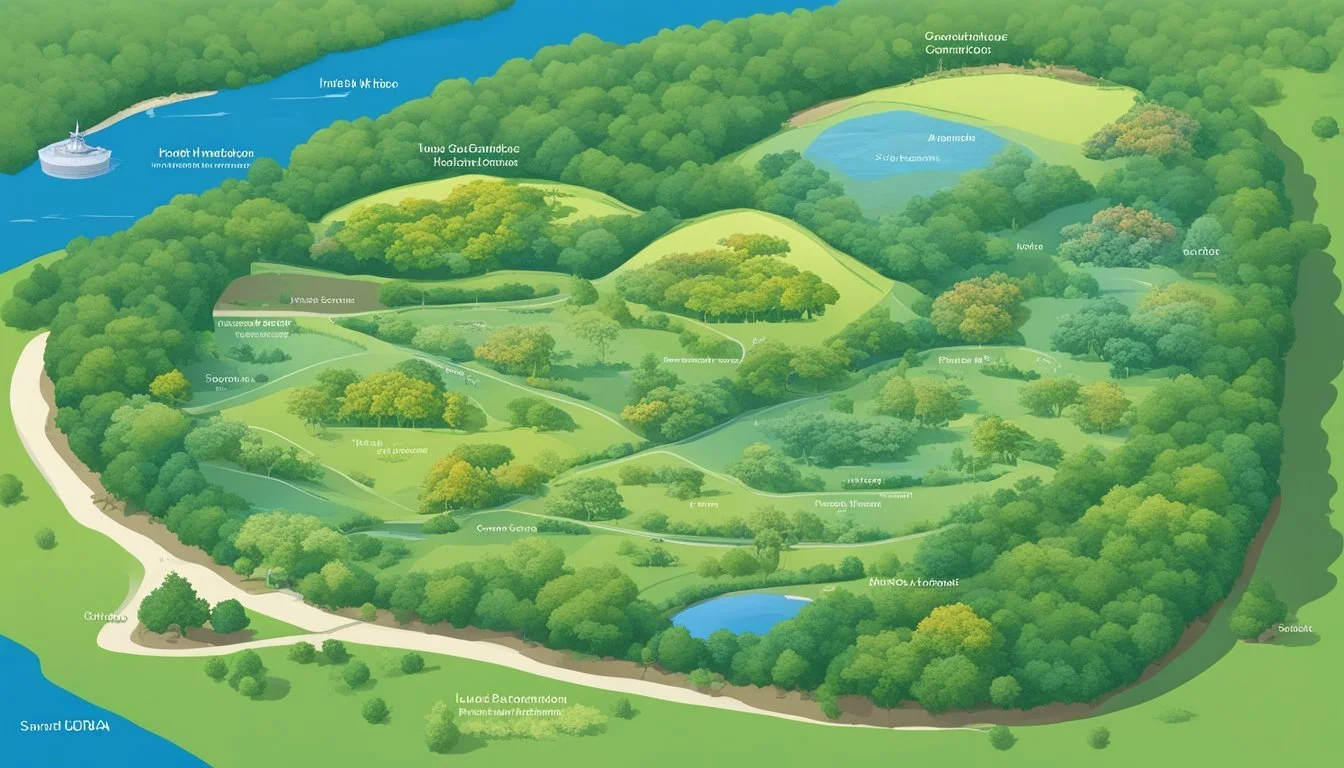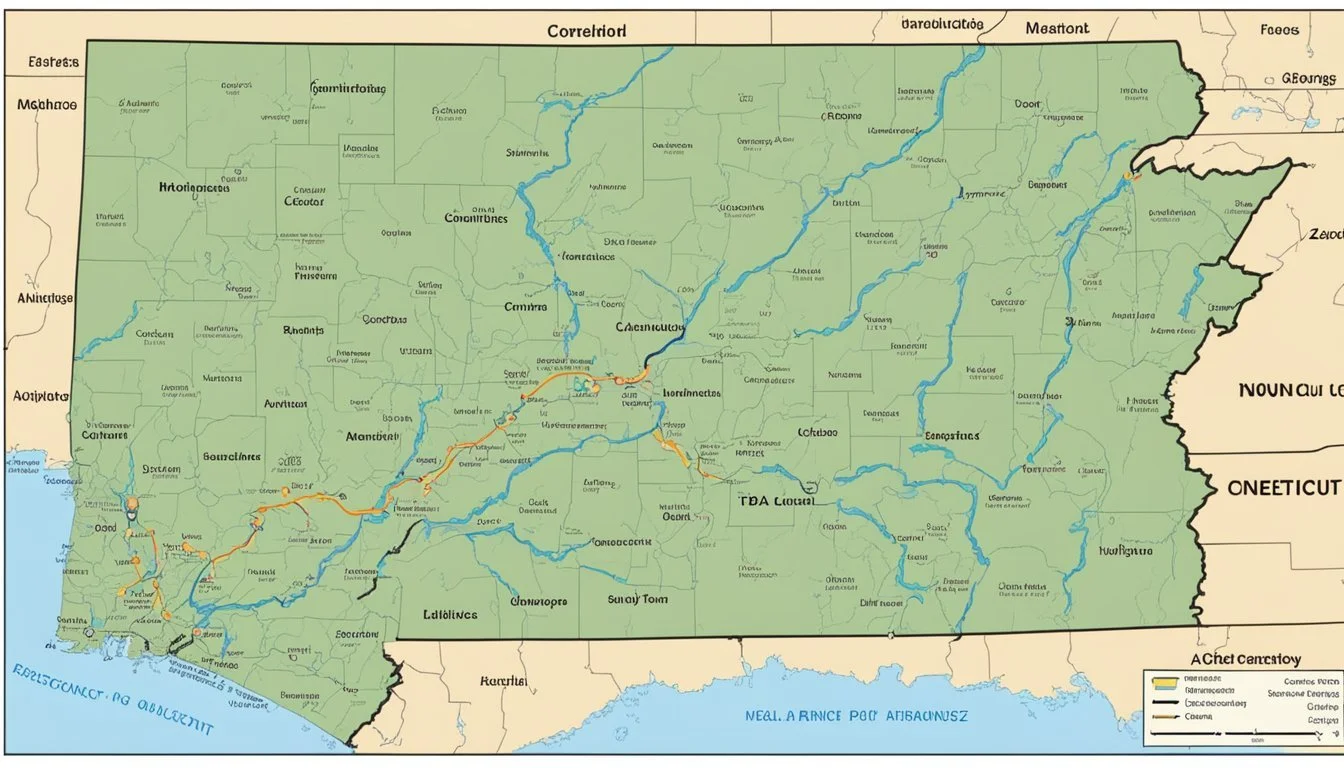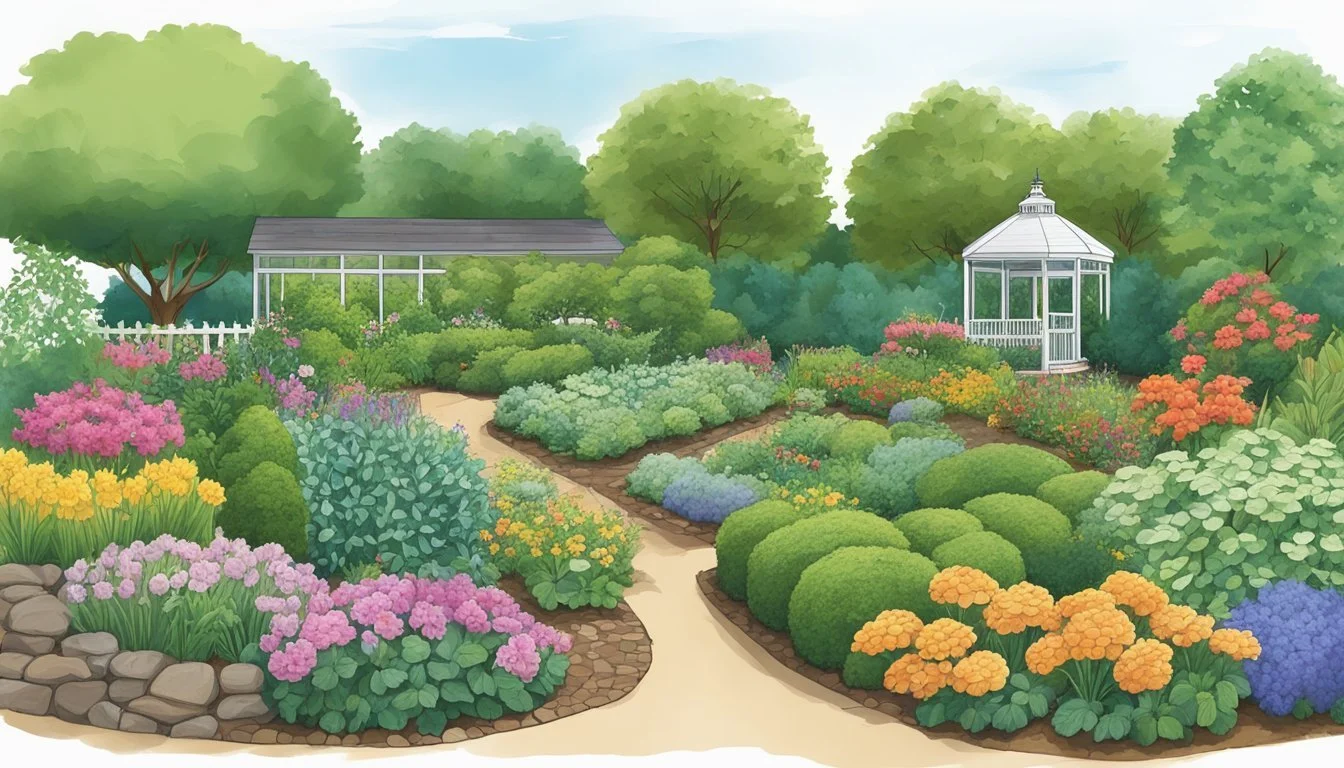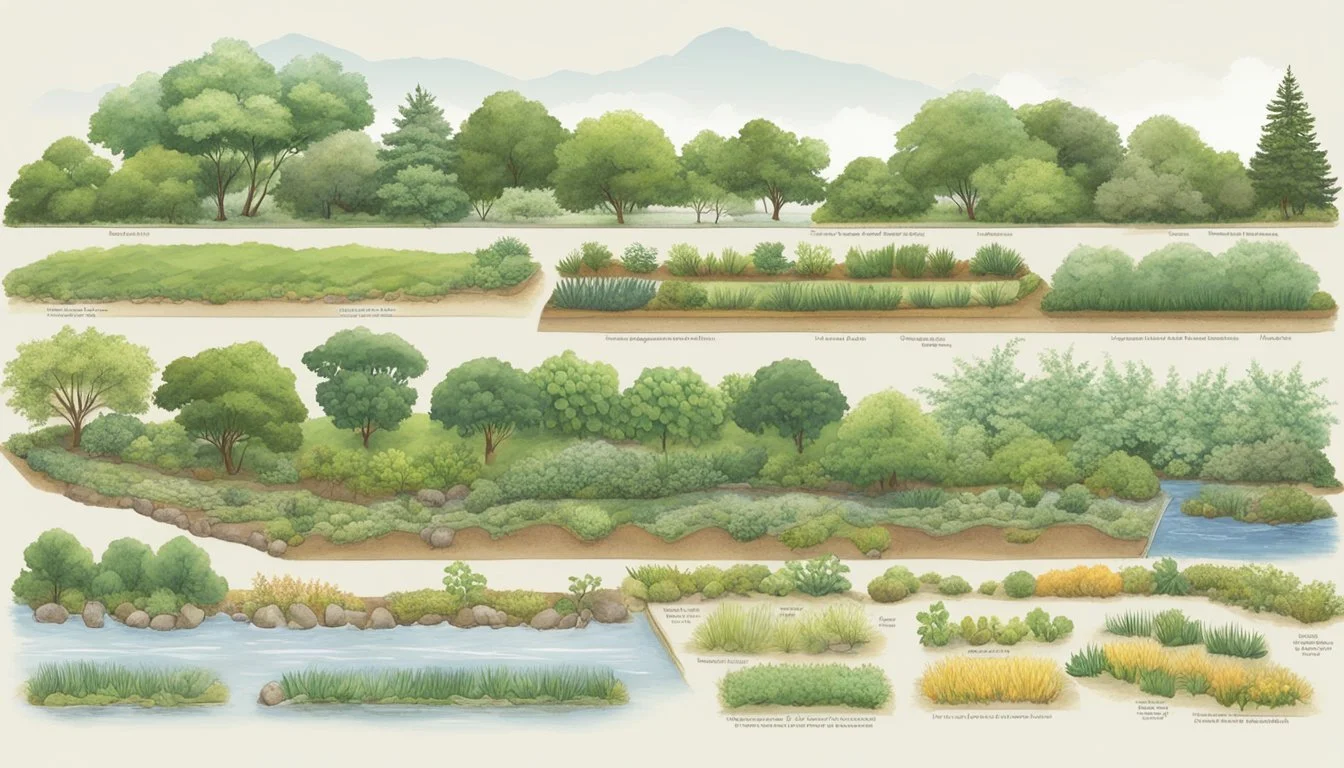USDA Hardiness Zones in Connecticut
A Guide to Planting by Region
Understanding the USDA Hardiness Zones is crucial for gardeners and agriculturalists in Connecticut to ensure the successful cultivation of perennial plants. The USDA Plant Hardiness Zone Map serves as a fundamental tool for determining the most suitable plants for a given location based on the average annual extreme minimum winter temperature. In a state like Connecticut, where weather can range from cool maritime to continental climate conditions, this information is particularly valuable.
The map divides the region into zones represented by 10-degree Fahrenheit increments, and in some cases, 5-degree Fahrenheit half zones for more precise guidance. Connecticut's diverse climate patterns are captured within these distinct zones, allowing for a tailored approach to planting and horticulture. The zones are devised using extensive climatic data, providing a reliable framework for gardeners to make informed decisions about which plant species can thrive in their local environments.
Recent updates to the USDA Hardiness Zone Map reflect the shifting temperatures due to climate change, potentially impacting the plant hardiness zones across Connecticut. These subtle yet significant changes can influence the long-term planning and planting strategies of growers, ensuring alignment with evolving environmental conditions.
Understanding USDA Hardiness Zones
The USDA Plant Hardiness Zone Map is a critical tool developed by the U.S. Department of Agriculture's Agricultural Research Service. It guides gardeners and growers in understanding which plants are most likely to thrive at a location. The map subdivides the United States into zones based on the average annual minimum winter temperature.
Connecticut, for instance, encompasses several hardiness zones due to its varying climatic conditions. Updated to reflect climatic shifts, the map gives a clear depiction of these zones:
Zone 5b: -15°F to -10°F
Zone 6a: -10°F to -5°F
Zone 6b: -5°F to 0°F
Zone 7a: 0°F to 5°F
Zone 7b: 5°F to 10°F
Plant hardiness is an indicator of plant survival and growth. It is an essential factor for agricultural research and planning. As temperatures are a reliable predictor of plant survival, the hardiness zones provide a straightforward approach for landscape planning and crop selection.
To utilize the hardiness zone map, one should identify their local zone and choose plants rated for it. For the most accurate guidance, gardeners should refer to the Interactive USDA Plant Hardiness Zone Map specific to Connecticut, which indicates a range of viable plants for each zone.
Remember, while the hardiness zones are reliable, they are just one tool among many. Other factors like soil type, humidity, and exposure to wind and sunlight also play significant roles in plant success.
USDA Hardiness Zones in Connecticut
The USDA Hardiness Zones are vital for gardeners and growers in Connecticut, guiding them in selecting the most appropriate plants for their locations based on minimum winter temperatures.
Zone Designations
Connecticut falls into several USDA Hardiness Zones, ranging from 5b through 7a. Zones are designated based on the average annual extreme minimum temperature with Zone 5b experiencing -15°F to -10°F, Zone 6a from -10°F to -5°F, and Zone 6b from -5°F to 0°F. The higher Zone 7a has minimum temperatures ranging from 0°F to 5°F.
Regional Variations
Regionally, Connecticut's hardiness zones demonstrate a north-to-south and inland-to-coastal gradient, with colder zones typically found in the northwest and warmer zones stretching towards the coastline. This variation means that the same plant species might thrive in one part of Connecticut, yet struggle in another.
Key Cities and Their Zones
Hartford: Predominantly in Zone 6a, residents can select plants suitable for -10°F to -5°F.
New Haven: Falls under Zone 7a, offering a warmer climate for gardening with temperatures rarely dropping below 0°F.
Bridgeport: Also in Zone 7a, this coastal city benefits from the moderating effect of the Long Island Sound.
By understanding the USDA Hardiness Zones, those in Connecticut can make informed decisions when cultivating their gardens, ensuring better plant establishment and growth.
Interpreting the Plant Hardiness Zone Map
The USDA Plant Hardiness Zone Map is a critical tool for gardeners and growers, designed to provide detailed information about the suitability of perennial plants in various locations, guided by the average annual extreme minimum winter temperatures.
Map Legend
The map legend is an essential key in understanding the Plant Hardiness Zone Map. It details the specific temperature ranges that define each hardiness zone. Zones are categorized in 10-degree Fahrenheit increments, with each further broken down into 'a' (warmer) and 'b' (colder) 5-degree Fahrenheit half-zones. For example, Zone 5b represents areas with extreme annual lows between -15°F and -10°F, whereas Zone 6a reflects temperatures from -10°F to -5°F. Users can access this vital information for planning their gardens by consulting the 2023 USDA Plant Hardiness Zone Map.
Using the Interactive GIS-Based Map
The Interactive GIS-based map is a tool offered on websites such as Connecticut Interactive USDA Plant Hardiness Zone Map that allows users to understand the hardiness zones at a local level. GIS, or Geographic Information System, technology provides a detailed visual representation of the zones. Users can zoom in to see the zones for specific areas or enter their zip code for personalized information. Beyond viewing the map online, map downloads may be available to integrate with other GIS applications for more comprehensive analysis and planning.
Applying Hardiness Zones to Gardening
Understanding USDA Hardiness Zones is crucial for Connecticut gardeners, as it guides them in selecting plants that can survive the local climate and in leveraging microclimates for gardening success.
Selecting Appropriate Plants
Gardeners in Connecticut should use the USDA Plant Hardiness Zone Map to identify plants appropriate for their region. For instance, if a gardener is located in Zone 6a, they can confidently plant shrubs and perennials that are rated for Zone 6 or below, ensuring these plants will tolerate the average extreme minimum winter temperatures.
Perennials: Suitable for Zone 6a might include:
Daylilies
Peonies
Hostas
Shrubs: Suitable for Zone 6a:
Hydrangeas
Butterfly bush
Boxwood
By selecting plants that match their hardiness zone, gardeners increase the likelihood of gardening success and establish a resilient landscape.
Microclimates and Gardening Tips
Microclimates refer to small areas within a garden where the climate can be slightly warmer or cooler than the surrounding zone designation. Gardeners can take advantage of these areas, creating opportunities to grow plants that may not typically thrive in Connecticut's larger climate zone.
Gardening Tips:
Sun Exposure: Plants near walls that retain heat might survive in a microclimate even if they're from a higher zone.
Wind Protection: Sheltered areas can host more delicate species, as they're protected from harsh winds.
Topography: Elevated areas might be cooler, while dips in the landscape can trap cold air, affecting plant health.
By understanding and utilizing microclimates within their gardens, Connecticut gardeners can cultivate a diverse and thriving garden despite the challenges posed by the larger climate zone.
Climate Factors Affecting Plant Hardiness
Understanding the climate factors that influence plant growth and survival is crucial for successful gardening and agriculture in Connecticut. Two primary elements to consider are the temperature parameters and the ongoing shifts due to climate change.
Temperature Ranges and Extremes
Winter Temperature: In Connecticut, winter temperatures guide the categorization of USDA Hardiness Zones. The zones reflect areas with similar lowest average temperatures experienced during the winter, which are key to assessing plant survival rates and growth patterns. As an example, some areas in Connecticut are now classified in warmer zones due to these temperature shifts.
Extreme Minimum Temperature: It is the extreme minimum temperature—the lowest temperature a region typically experiences—that significantly dictates which plants can thrive. Plants must be selected based on their ability to withstand Connecticut’s coldest winters to ensure they can survive the seasonal variability.
Impact of Climate Change
Climate Change: Recent climate change patterns have a pronounced impact on the USDA Hardiness Zones. Average temperatures in Connecticut have changed, prompting a revision of the hardiness zones to reflect the warmer climate.
Average Temperatures: Raising average temperatures in Connecticut has led to southern plant species to become more adaptable to its climate, according to updated USDA maps. This shift not only indicates how much the state's climate has warmed but also affects the plant selection and cultivation strategies for local gardeners and agriculturalists.
Additional Resources for Connecticut Gardeners
Gardeners in Connecticut have a wealth of resources at their disposal to help them adjust to the latest USDA Hardiness Zone Map and to understand how local climate changes may impact their gardens.
Local Nurseries and Extension Services
Local nurseries play a pivotal role in guiding Connecticut gardeners. They offer region-specific plants that are well-suited to the prevailing conditions identified in the updated map of the hardiness zone. These nurseries often feature native species that thrive in the state’s diverse climates and provide critical advice on plant care.
Extension services are also invaluable. Entities like the Oregon State University's PRISM Climate Group collaborate to deliver precise climate data that influence planting and harvesting times. Gardeners should take advantage of extension services for workshops, planting guides, and personalized advice.
Educational Materials from Experts
Connecticut gardeners are encouraged to utilize educational materials produced by horticultural experts. These materials often break down complex topics, such as understanding the USDA Hardiness Zone Map, into digestible content that empowers gardeners to make informed decisions.
Whether it's through books, online courses, or local seminars, the knowledge imparted by these experts is essential for gardeners looking to ensure the sustainability and health of their gardens amidst a changing climate and evolving hardiness zones.
Protection Strategies for Perennial Plants
Gardeners in Connecticut often face the challenge of protecting perennial plants from extreme winter temperatures. Knowledge of recent updates to the USDA Hardiness Zone Map is crucial as it provides guidance on which plants are most likely to thrive.
Insulation with Mulch: Mulching is a primary defense against cold. A thick layer of mulch acts like a blanket, safeguarding the roots from severe cold and temperature fluctuations. Organic materials such as straw or leaves are effective insulators.
Snow as a Shield: Ironically, snow can serve as a protective barrier. A steady accumulation keeps soil temperatures consistently cold, thus shielding plants from the stress of freeze-thaw cycles.
Windbreaks: Erecting barriers such as fences or planting dense shrubbery can reduce the impact of cold winds that rapidly draw heat from the soil and plants.
Watering Practices: Adequate watering before the ground freezes ensures that plants stay hydrated, which is essential since desiccation is a risk during winter.
Action
Apply Mulch
Utilize Snow
Create Windbreaks
Water Thoroughly
Description
Use organic mulch for insulation.
Allow snow to cover plants, if feasible, for natural insulation.
Implement structures or shrubbery to lessen wind exposure.
Water perennials well before the first freeze to ensure hydration.
Anti-Desiccant Sprays: These sprays form a protective coating on the foliage to reduce moisture loss. They are useful for evergreen perennials that retain their leaves through winter.
Protective Covers: For particularly vulnerable plants, gardeners may utilize burlap or frost cloth covers to provide extra warmth.
Through these strategies, perennial plants can be effectively protected, ensuring they remain a vibrant part of Connecticut's landscapes through the seasons.
Hardiness Zone Updates and Changes
The USDA Plant Hardiness Zone Map has undergone significant updates, reflecting changes from 1991 to 2020. These updates showcase a notable shift in weather patterns, which have influenced the distribution of hardiness zones in Connecticut.
In the most recent 2023 update, Connecticut's zones have shifted, indicating that the state is experiencing warmer winters. Prior maps, such as the 2012 version, placed significant areas of Northwest Connecticut in zone 5. This zone is characterized by winter minimum temperatures between minus 10 and 20 degrees Fahrenheit. However, this area is no longer classified within zone 5 due to an uptick in temperatures.
The USDA Plant Hardiness Zone Maps have become essential tools for gardeners and growers. They rely on these maps to determine the viability of perennial plants based on the regions' average annual extreme minimum temperature.
Previous Zones (1991 - 2012)
Zone 5: Northwestern CT
Zone 6: Central CT
Zone 7: Coastal CT
2023 Updates
Shifted Zones: Areas previously identified as Zone 5 have transitioned into warmer zones.
It is imperative for Connecticut residents to consult the newly released map to make informed decisions about plant selection and cultivation. The shift in hardiness zones points to broader climate trends that are directly impacting local flora. Gardeners are advised to select species that will thrive in their current hardiness zones to ensure successful cultivation.
Technical Aspects of Hardiness Zone Maps
The USDA Plant Hardiness Zone Map leverages cutting-edge GIS technology and meticulous weather data analysis to provide a detailed guide for gardeners and growers. This section examines the technical underpinnings that make these maps an indispensable tool in horticulture.
GIS Technology and Data Collection
Geographic Information System (GIS) technology is critical in creating the USDA Hardiness Zone Map. It collects and manages geographical data, allowing for the precise mapping of climate patterns across different regions. A broadband internet connection is often recommended due to the large datasets involved, which require significant bandwidth to process and access promptly. The data integrated into GIS comes from various sources, ensuring a comprehensive coverage of the climatic conditions.
Analyzing Weather Data
The analysis of weather data is instrumental for the USDA Plant Hardiness Zone Map's accuracy. It involves calculating the average annual extreme minimum winter temperatures to assign each region a specific hardiness zone. These zones range from 1 (coldest) to 13 (warmest) with 10-degree Fahrenheit increments, further divided into 'a' and 'b' subzones for 5-degree Fahrenheit gradations. This precise data modeling helps predict which perennial plants are likely to survive and thrive in a given zone.
Frequently Asked Questions
Understanding the USDA Hardiness Zones is essential for any gardener or planter in Connecticut as it determines which plants are likely to thrive in a given location.
Which USDA Hardiness Zones are found within the state of Connecticut?
Connecticut encompasses several USDA Hardiness Zones, including Zones 5b through 7a. These zones reflect the plant-growing climates based on minimum winter temperatures.
How can I find the specific planting zone for my zip code in Connecticut?
Individuals can find the specific planting zone for their area by visiting the 2023 USDA Plant Hardiness Zone Map and entering their zip code for the most up-to-date information.
What is the range of temperatures associated with Connecticut's hardiness zones?
The temperature ranges for Connecticut's hardiness zones vary, with Zone 5b experiencing winter lows of -15°F to -10°F, 6a from -10°F to -5°F, 6b from -5°F to 0°F, and 7a from 0°F to 5°F.
Could you provide information on the best plants suitable for Zone 6b?
Some well-suited plants for Zone 6b include perennials like Echinacea, Lavender, and Japanese Maple trees. Hardy varieties that can tolerate winter cold in this zone are ideal.
How does the USDA Hardiness Zone system apply to urban areas like Hartford or New Haven?
In urban areas such as Hartford and New Haven, the USDA Hardiness Zone system helps urban planners and landscapers choose plants that will survive the local climate, taking into consideration the urban heat island effect which can cause zones to be warmer.
What resources are available for understanding the hardiness zones on a detailed map of Connecticut?
Gardeners can reference detailed hardiness zone maps like the interactive map available from Plantmaps or the updated information found at Gardening Know How, providing insights into the Connecticut USDA Zone Map.










